When we think of lymphedema, we usually picture an adult; however, this is not always the case. Every year, children are being diagnosed with lymphedema as well. Because pediatric lymphedema is relatively rare, it can often be hard for families to find resources and the best possible treatment options for their child. As with adult cases, pediatric lymphedema carries with it the significant and lifelong commitment of having to manage the chronic swelling and prevent secondary complications. Children with lymphedema may be affected by swelling of an extremity, the genitalia or other tissue areas.
I am very grateful to Betty Westbrook, PTA, CLT-ALM for providing this interesting and very insightful contribution on the special considerations concerning the treatment and management of pediatric lymphedema. Ms. Westbrook is also the host of Lymphedema Podcast and the Founder and Director of Camp WatchMe, the only summer camp in the United States for children with lymphedema.
Pediatric Lymphedema – The Challenges of Treatment (by Betty Westbrook)
Pediatric lymphedema in the United States is significantly underdiagnosed and undertreated. You may not want to think about it, but children can develop lymphedema. They can also be born with lymphedema. When a mother is pregnant the lymphatic system of her growing baby is developed in the fifth week of gestation. During development, a malformation in this key body system can occur, resulting in primary lymphedema.
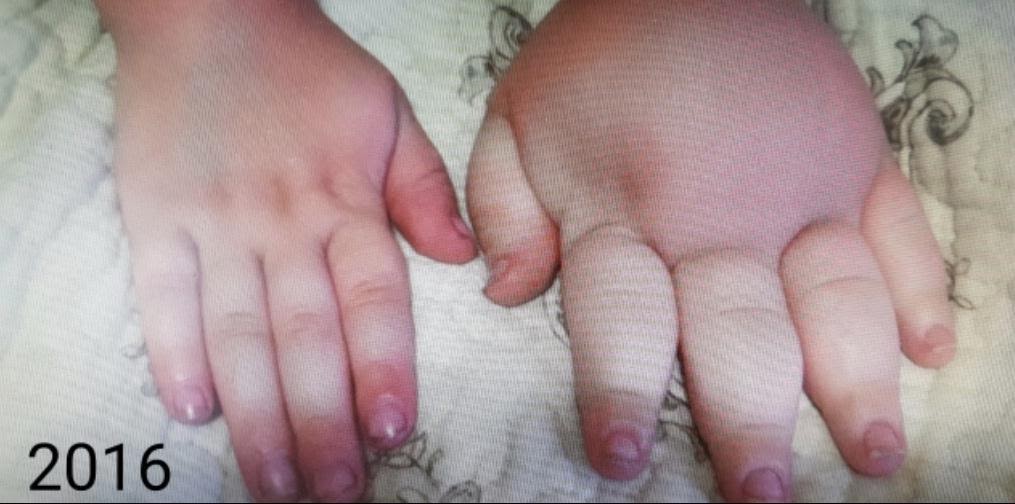
Primary LE left arm
The two most common forms of primary pediatric lymphedema are Milroy’s disease (family history + swelling present at birth) and Meige’s disease (commonly presented during puberty). Secondary lymphedema is due to trauma to the lymphatic system, most commonly related to the treatment of cancer, burn injuries, or accidents resulting in spinal cord injury and/or paralysis. Removal of lymph nodes for biopsy, radiation treatment, and bone marrow procedures are causes for cancer related secondary lymphedema.
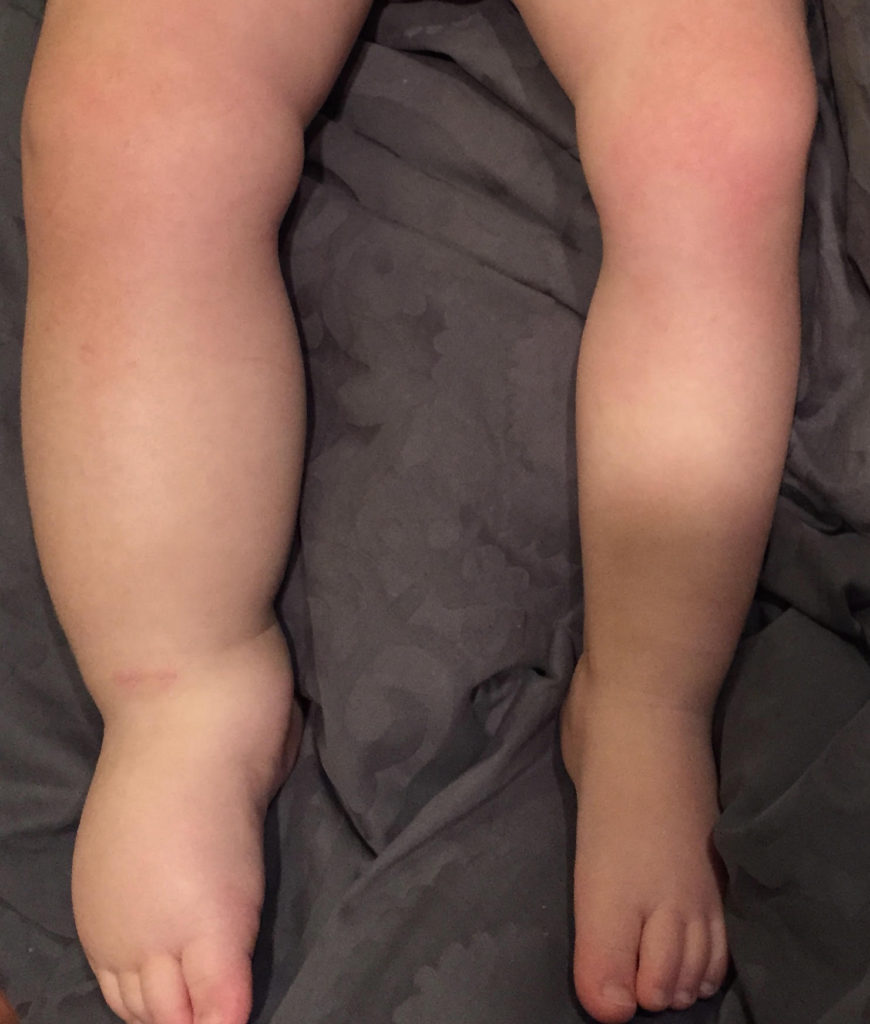
Primary LE right leg
The lymphatic system is responsible for removing toxins and waste from the body. The lymph fluid it transports contains water, proteins, and waste particles filtered from the bloodstream. When the internal pressure is disrupted (due to trauma or a malformation of valves in lymph vessels) the lymph fluid is not removed as intended. Instead, that lymph fluid accumulates in the distal end of the body, often the hands and feet. Some doctors will treat this swelling with diuretics to remove the water or edema. Unfortunately, lymphedema does not respond to diuretics and their use can lead to dehydration and thickening of the lymphatic fluid, making it more difficult to decrease the accumulated fluid.
Treatment for pediatric lymphedema is a modified form of Complete Decongestive Therapy (CDT) and should be performed by a Certified Lymphedema Therapist (CLT). The components of CDT are manual lymphatic drainage (MLD), compression, exercise, and skincare.
Manual Lymphatic Drainage: The pressure used in pediatric MLD is the same as when treating adults. Use enough pressure to move the skin during working pressure, but not so much to cause redness. Modified semi-circle strokes using the thumbs or first and second fingers are best for infants and toddlers. As the child grows the full hand and additional strokes may be used. Young children will not lay still for a full MLD session, so meet them where they are developmentally. If they are young enough, they may nurse or take a bottle from a parent while MLD is performed. If the child is mobile, they may need to be distracted with a toy or activity. I recommend performing MLD with the child in whichever position is comfortable for them. This may be sitting, propped on elbows, side lying, or lying in their parents’ arms. Remember to meet them where they are. If treatment is forced in a rigid structure, young children will not do well with the limitations as they cannot understand the need to lie still for an hour of treatment. It is not recommended to perform abdominal techniques on children under the age of 12. To activate the deep lymphatics, I recommend including singing, laughter, and blowing bubbles (candles, food, dandelion puffs, etc.).
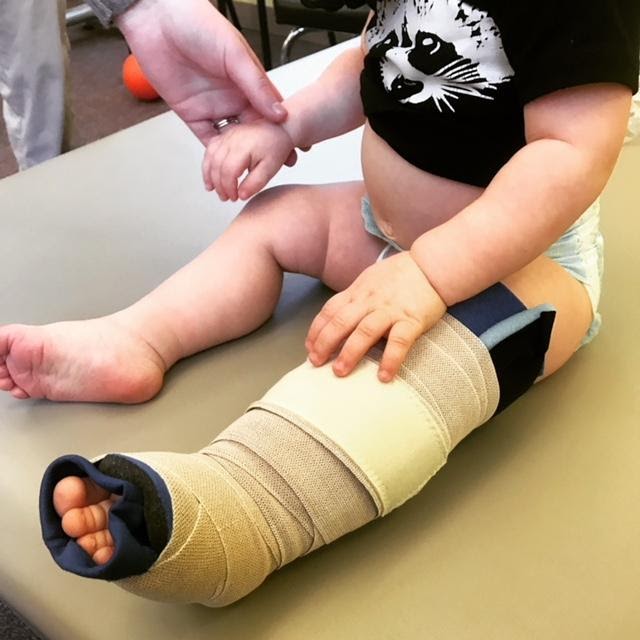
Example of modified multi-layered compression bandaging on a child
Compression: Special consideration of developmental milestones is needed when treating infants and toddlers. Traditionally, bandaging during the night is recommended until the child is mobile. I recommend incorporating bandaging during the day a few hours at a time to help the child acclimate to the layers. If the bandage interferes with development causing delays, then bandaging at night is best until a later time. Children grow overnight it seems, and off-the-shelf garments are tailored for adults; for these reasons it is recommended to fit children for custom garments every 3-6 months. Pay close attention to the fit of garments and the skin integrity after wearing, this may give signs that it is time to order new garments. Pneumatic compression sleeves can be custom made (LymphaPress) to fit a pediatric limb and provide children with regulated pressure to help decongest the affected area, as well as reduce fibrosis, if present.
Exercise: Get creative and make it fun! After bandaging, engage in a series of fun games that require total body movement. Kick ball, playing catch, dancing, jumping on a rebounder (miniature trampoline), or
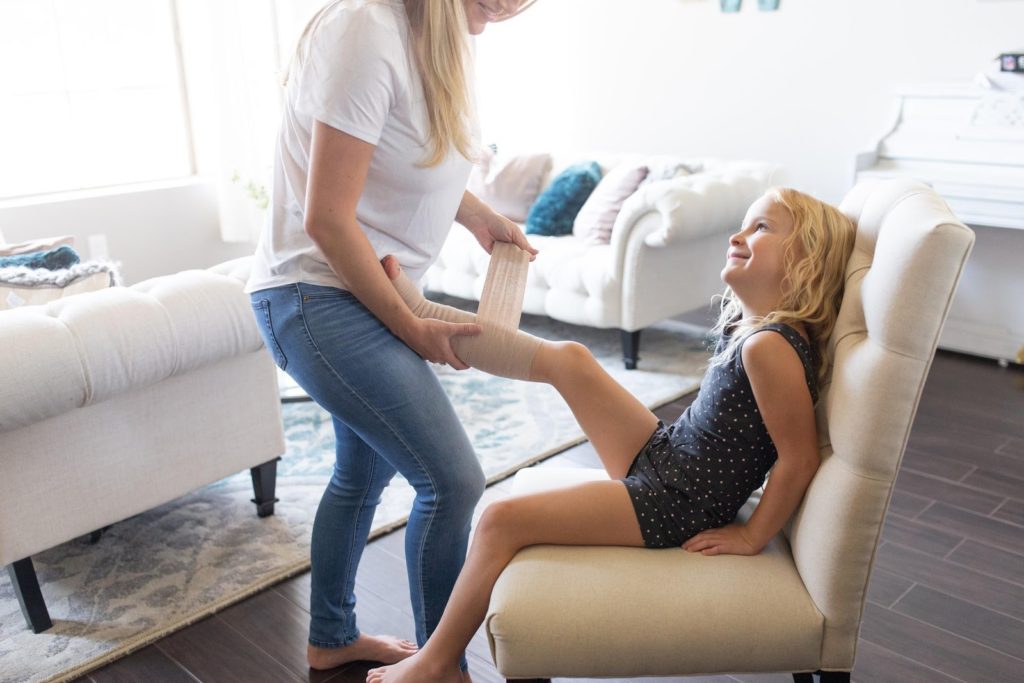
Mother Brittany, and daughter Brylan make compression bandaging a priority
completing an in-door obstacle course are just a few of my recommended exercise activities. To date, my favorite exercise with a kiddo was basketball drills in the parking lot; it encouraged him to practice and gave him the confidence he needed to play basketball at school.
Range of motion is often limited in children who have had untreated lymphedema for years. Active and passive stretching to improve range of motion is important but often overlooked. When possible, I recommend beginning stretching early in treatment before limited range is an active problem.
Skin and Nail Care: Kids are notorious for bumps, bruises, and scrapes that leave parents saying, “when did that happen?” Due to the high protein content of lymph fluid, there is an increased risk of infection anytime there is a break in the skin. Daily skincare should include checks for scrapes and cuts, applying a low pH lotion free of fragrance, thorough washing and drying of skin before reapplying compression. Cysts, blisters, or ingrown nails are common concerns that may need special attention. One product that eliminates the concern of unwanted cuts during nail care is Little Martin’s Drawer Baby Nail Trimmer. It is an electric, handheld, Dremel with many attachments, and a light for precision and safety.
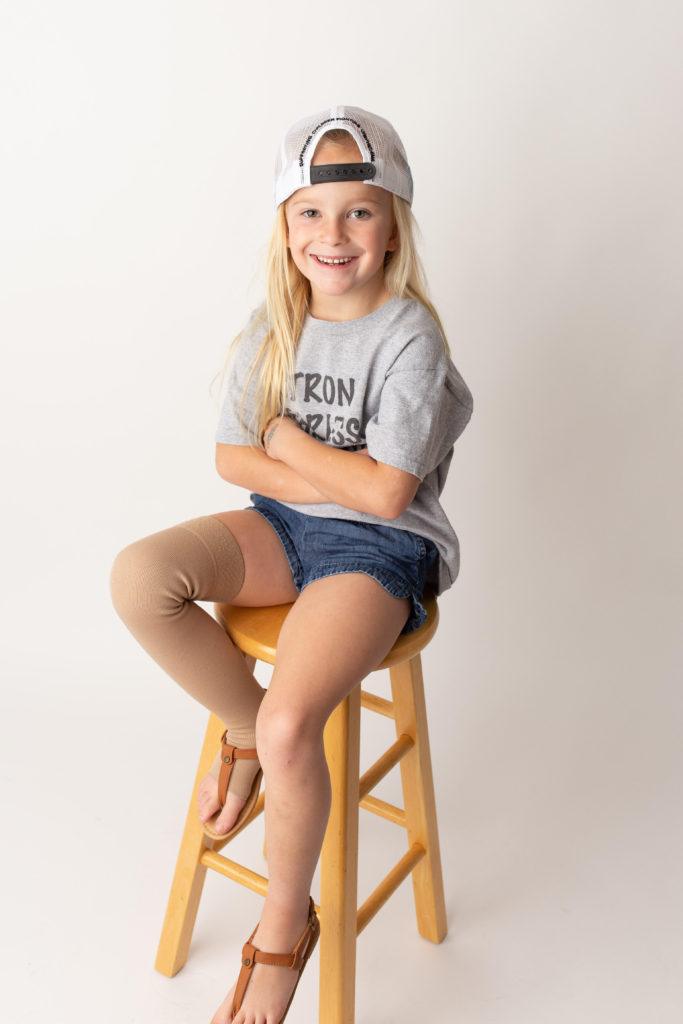
Brylan Williams, who was born with primary lymphedema
Unlike adult lymphedema treatment there is a huge emphasis placed on education and communication with the parent/caregiver of the child. No child wants to spend their time bandaging, performing self MLD, or going to see their CLT. Parents are the best advocate for their child, but unlike CLTs they do not have all the tools and training when they start this journey. I suggest that as you, the CLT, work through CDT sessions you actively talk the whole time to the parent in the room with you. Encourage them to record the session on their phone, audio at the very least, so they can pull up the session later to listen to it as many times as they need. Describing each step of the session will put a visual demonstration with the information they have read and heard of up to this point in their research. Keep in mind that the parents are drinking from a fire hydrant, the information is flowing faster than they can carry, be patient with them when they ask the same question multiple times. They are doing their very best. Providing take home education is helpful but keep it to minimum or on an as-requested basis so they are not overwhelmed with the number of documents to read.
Resources for parents are not very common, but here in the United States we are fortunate to be home to the only non-profit for children with lymphedema, Brylan’s Feat Foundation. Based in Arizona, this organization offers free resources and support to parents. A few highlights on the services they provide can be found on their website, or you can reach out directly to Brittany Williams at brittany@brylansfeat.org, the founder, and CEO of Brylan’s Feat Foundation. Camp Watchme is a Brylan’s Feat Foundation event and is the only summer camp in the United States for children with lymphedema. At camp, kids and their parent/caregiver come together for a week of education, fun, and friendship! Camp Watchme is open to families in the USA and internationally. If you are looking for a similar experience, there is a summer camp in Italy for children with Lymphedema as well.
In summary, there are more similarities than not in the treatment of adult and pediatric lymphedema. A few simple modifications to MLD sequences, compression class, and application, as well as a new approach to exercise, can give children with lymphedema a head start they desperately need. I urge all who are certified to treat lymphedema to consider this; we are certified to treat the disease lymphedema, no matter the size of the person who needs our help. If you find yourself thinking “I only treat adults” please replace adults with lymphedema before you decide if you can help a family in need of your expertise. Reach out to me or other CLTs with pediatric experience if you have questions.
Dear Reader – if you like the contents on this website, please help to keep it going. A great amount of work and research is necessary to provide you with up-to-date information on this site. Your donation supports these efforts and associated administrative costs. Surplus funds will be donated to Lymphedema/Lipedema-related charitable endeavors. Please donate using the “Donate Now” button on the right upper hand of this page – Thank You!
Join Lymphedema Guru, a Facebook page solely dedicated to inform about all things related to lymphedema – news, support groups, treatment centers, and much more
Additional Resources: https://torontophysiotherapy.ca/comprehensive-guide-lymphedema-in-children/

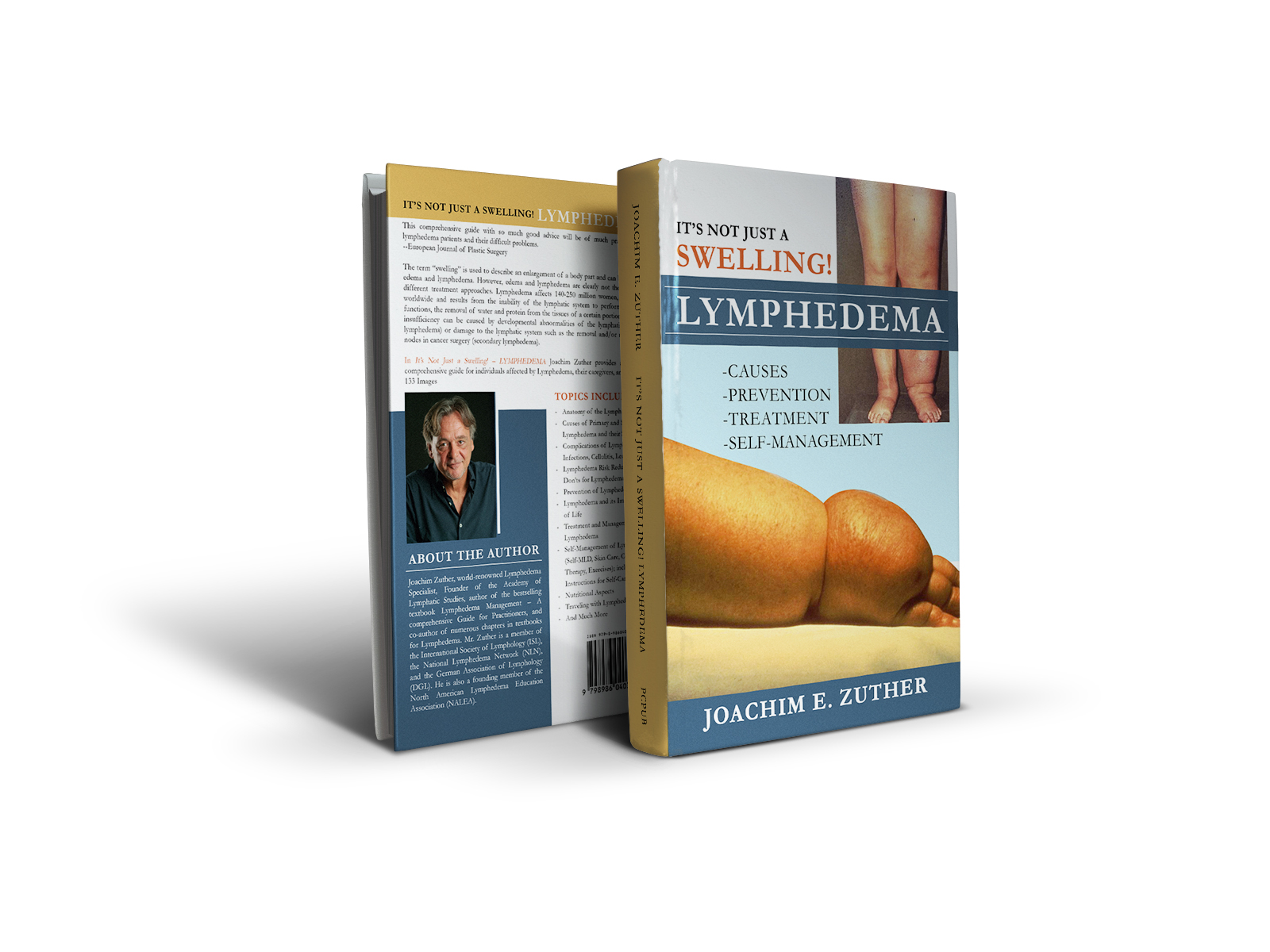
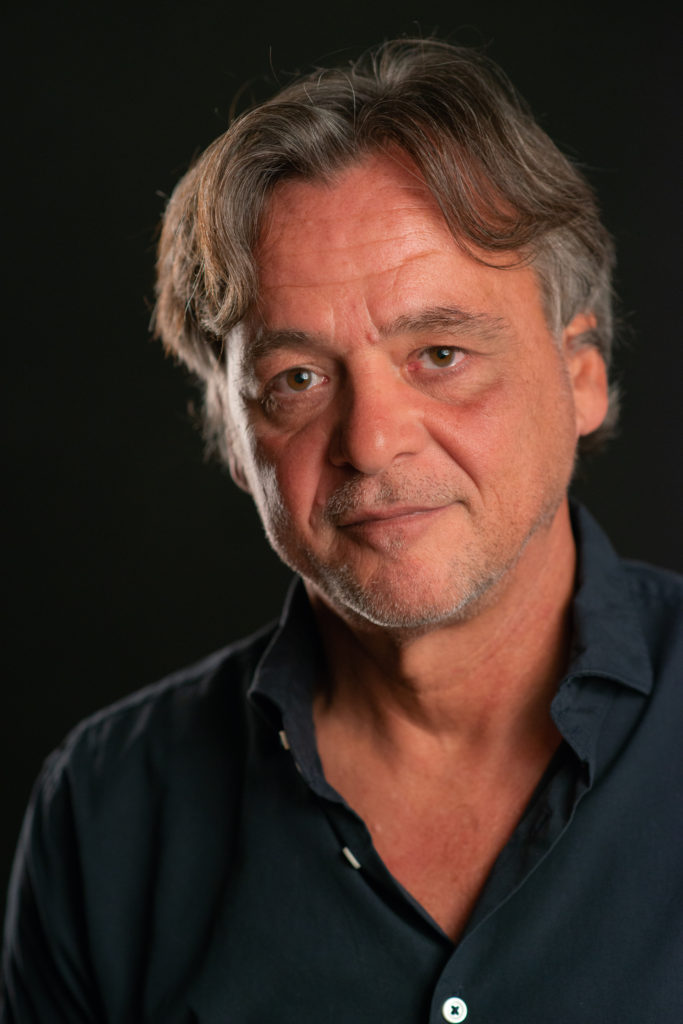 Joachim Zuther, Lymphedema Specialist.
Joachim Zuther, Lymphedema Specialist. 
